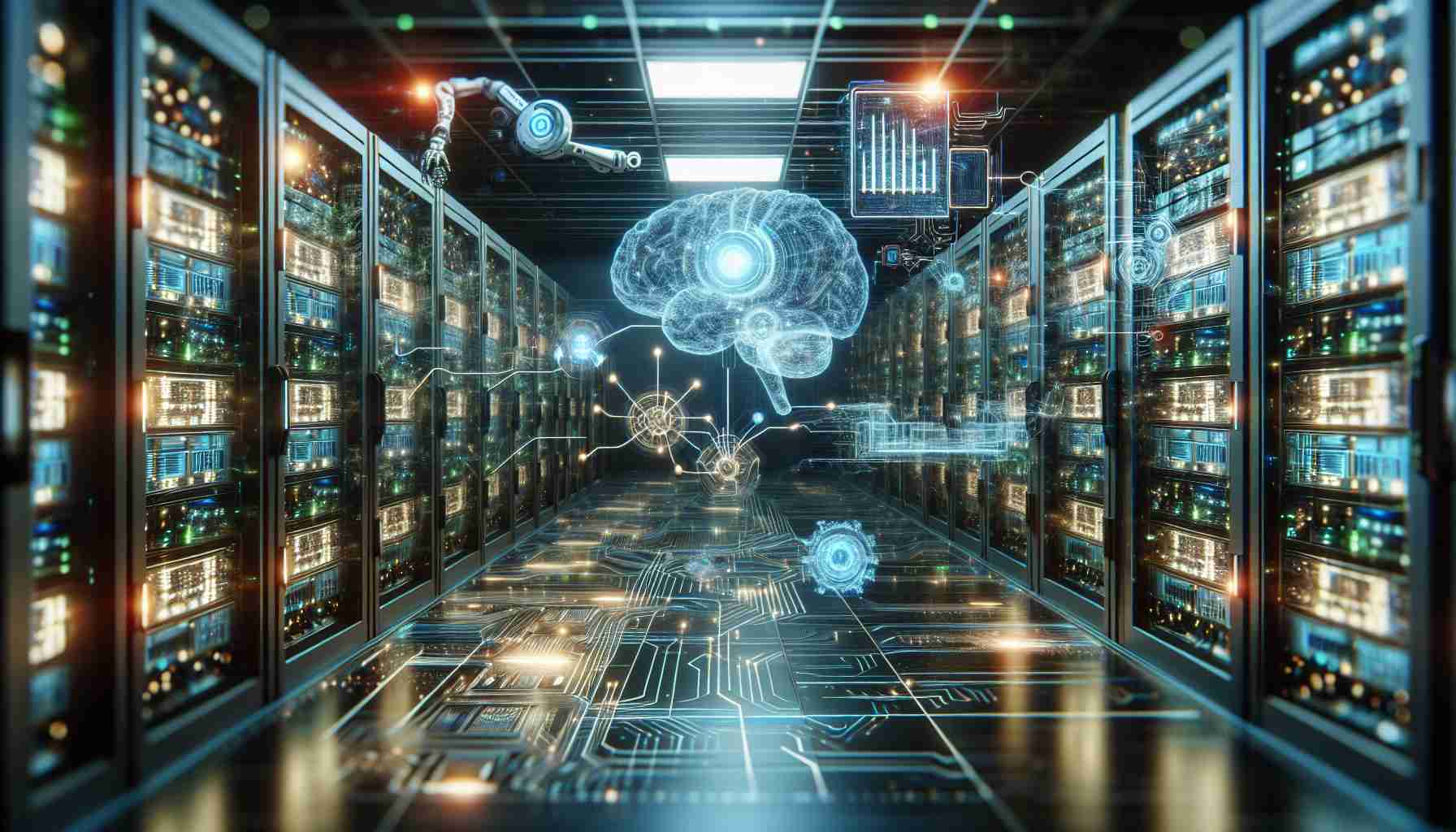Unleashing the Potential of AI Applications
The realm of AI applications is continuously evolving, with a particular focus on enhancing both software-based and hardware-based solutions. As AI technology progresses, the underlying drive for innovation remains steadfast. Despite initial concerns about the limitations of AI endpoints like smartphones and computers in terms of computing power and size constraints, recent advancements in large-scale models have paved the way for a new era of intelligent endpoints. The synergy between cloud-based and endpoint-based large models creates a dynamic partnership that addresses the challenges of deep intelligence and real-time interactions, ensuring a balance between timeliness and portability while safeguarding privacy.
Embracing the Era of AI Endpoints
AI endpoints, once underestimated, are now gaining traction due to their adaptability and functionality. Companies are racing to leverage cloud computing resources to enhance their models, heralding a new wave of innovative AI applications. The arrival of AI endpoints marks a significant shift in the technological landscape, where devices like smartphones and computers are poised to serve as personalized assistants, offering tailored services and suggestions to users. The convergence of cloud and endpoint processing is essential for the scalable expansion and optimal utilization of AI capabilities.
AI-powered Smartphones and PCs Leading the Way
The emergence of AI smartphones and AI personal computers (AIPC) signifies a pivotal moment in the tech industry. With AI smartphones equipped with specialized units for accelerating AI tasks and AI-infused models operating at rapid speeds, the industry is witnessing a transformation in the way devices interact with users. Companies like Samsung are spearheading the AI smartphone revolution, bridging the gap between cloud-based and endpoint-based AI functionalities. The relentless pursuit of innovation in AI endpoints has intensified competition among major players, with the success of AI-enabled devices set to reshape the competitive landscape in the future.
The Path Forward for AI Endpoints
As AI endpoints continue to evolve, traditional devices such as smartphones and PCs are expected to undergo a renaissance fueled by AI integration. With advancements in heterogeneous chip designs driving differentiation, the industry faces a period of significant change and unpredictability. Key players like Apple, Samsung, and Qualcomm are set to influence the future of AI smartphones and PCs, each vying for a dominant position in this burgeoning market segment. The journey towards establishing AI endpoints as indispensable tools for users may still be unfolding, but the promise of groundbreaking products and enhanced user experiences looms on the horizon.
Revolutionizing the Future of AI Endpoints: Unveiling New Horizons
In the realm of artificial intelligence, the evolution of AI endpoints is poised to revolutionize the way we interact with technology. While previous discussions have highlighted the growing significance of AI applications in various devices, there are additional facets to consider in this ever-changing landscape.
The Unseen Potential: Edge Computing and AI Endpoints
One crucial aspect that often goes unnoticed is the intersection of edge computing and AI endpoints. Edge devices, such as sensors and IoT gadgets, are increasingly incorporating AI capabilities to process data locally, enabling faster decision-making and reducing reliance on cloud resources. This shift towards edge AI not only enhances efficiency but also raises questions about data privacy and security in decentralized processing environments.
Key Questions and Insights:
1. How do AI endpoints impact data privacy and security?
As AI endpoints become more prevalent, ensuring the confidentiality and integrity of data processed on these devices is paramount. Encryption protocols and secure storage mechanisms are essential in safeguarding sensitive information from potential breaches.
2. What are the challenges of integrating AI models into resource-constrained devices?
While advancements in large-scale models have expanded the capabilities of AI endpoints, optimizing these models to operate efficiently on devices with limited computational power remains a significant hurdle. Balancing performance with energy consumption is a key challenge in developing AI-powered endpoints.
Advantages and Disadvantages of AI Endpoints
Advantages:
– Enhanced User Experience: AI endpoints offer personalized services and predictive capabilities, tailoring interactions to individual preferences.
– Real-time Decision Making: Local processing of AI algorithms on endpoints enables quick responses and reduces latency for critical applications.
– Offline Functionality: With onboard AI models, endpoints can perform tasks even when disconnected from the internet, ensuring continuity of operations.
Disadvantages:
– Security Risks: Storing sensitive data on AI endpoints increases vulnerability to cyberattacks and unauthorized access.
– Complexity in Development: Designing AI models for diverse endpoint devices requires specialized knowledge and optimization techniques.
– Limited Resource Allocation: Balancing computational resources on endpoints for AI processing and other applications can lead to performance bottlenecks and trade-offs.
Exploring the Digital Frontier of AI Endpoints
Amidst the rapid advancement of AI technologies, the future of AI endpoints holds immense promise and challenges. Companies and developers are tasked with navigating the complexities of integrating AI into diverse devices while addressing concerns surrounding privacy, security, and performance optimization. The synergy between cloud-based AI and edge computing heralds a new era of intelligent endpoints, shaping the landscape of technology in the years to come.
For further insights on the future of AI endpoints, you can visit IBM AI Domain.




























